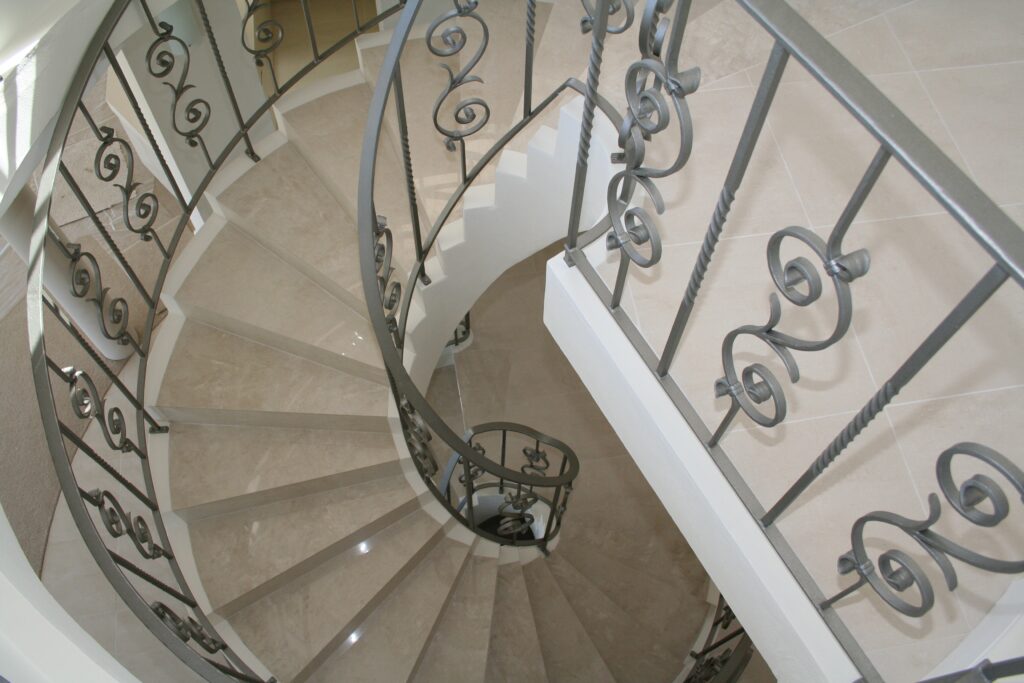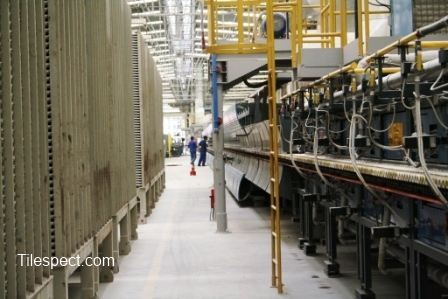
Good Quality Tiles Selection and Tile Quality Problem. The tile manufacturing process.
Before reading on you must read our conditions of use for this website found here Conditions Of Use. Reading on signifies your acceptance of our conditions of use
The Wall and Floor Tile manufacturing process is actually a combination of the three components being;
1-tile design
2-tile factory process – ceramic or porcelain tile rectification
3- tile selection
This last, tile selection is the sorting of tiles according to physical attributes which can be ranked in order of desirability. These are shade, caliber (size variation) shape imperfections such as excessive curvature as well as surface defects.
Good quality tiles are defined according to their measureable properties as well as visually defined attributes. I hope that this guide will give you some tips on describing any tile quality issues objectively and convincingly.
Manufacturers use the latest techniques and equipment to try to limit the variability caused when natural materials are subjected to firing at high temperatures. Selection processes are required to separate those pieces that exceed the inherent variability tolerances specified for the product. This occurs in every production run.

Porcelain Tile Production Line showing roller kiln and cooling racks
The factory will selects for 1st quality, 2nd quality, then 3rd . Usually any tiles left over from selection are listed as de-classified which means that they will be sold without specification or recycled. Some factories declassify after 2nds because they do not have a market for third quality.
So a first, second and third quality tile batches may come from exactly the same production run. They differ only in the selection tolerances. Also although a tile batch may be denoted as first quality it a very low frequency of imperfect pieces may still be regarded as acceptable variance.
It is important to note that for each variable property of tiles there exists a specified tolerance. For example, curvature (or bowing) tolerance for 1st quality may be expressed as a % of the length of one side (it may also be expressed in radians per unit length). Tolerance factors depend on the category of imperfection. They are also dependent on the design and intended use for the tile. For example, a rectified tile intended to be laid with a 3 mm spacing joint will have a much tighter size tolerance than is allowed for a rustic, cushion or regular edge tile which may be intended to be laid with a 6 – 9 mm spacing joint.
All of this feeds into your attempts to ensure good tiling work by making checks against bad tiles. If you find unsatisfactory tiles you can return them back to the re-seller. Because resellers are normally dependent on the acceptance by the importer and/ or the manufacturer they need to justify why the complaint is valid before they will commit to any compensation or remediation procedures. The KEY point is that some variation in any physical property is acceptable if it is within specification.
Therefore, the counted number of flawed pieces and recorded measurement of defective properties when complaining about the quality of delivered tiles is highly relevant.
This leads to one very important rule I recommend that you follow when performing a self-check and you have doubts about the delivered products;
“NOTE: IF A TILE QUALITY PROBLEM IS SUSPECTED: Report any problem with tiles to your supplier first.”
Note that none of these considerations takes away the normal rights of a consumer when buying from local suppliers, however overseas suppliers often abide by rules of arbitration in the country of manufacture.
Two broad concepts are in play when considering tile quality complaints;
1) The number of good and bad pieces in the job lot influences the solution. The number of tiles bearing the undesirable characteristic must be quantified, and where not practical, a reasonable estimate of the the extent of the problem can be made by performing random counts and establishing a percentage ratio. Often the solution is just a simple replacement of the faulty pieces, or a batch exchange.
2) *If a defect is visible, the tiler must not install the defective pieces. In such cases, the suppliers will consider installation as acceptance of the quality and they will not consider the cost of installation in any compensatory package.
In general, note that;
- The earlier a problem is reported and action is taken, the greater the options for resolving any issues. This is because replacements stocks of a particular batch or shade will have a limited supply and replacement stocks are frequently brought in from another market
There are two separate occasions for checking your new tiles; both are important and both should be performed.
They are
i) Product Delivery check. Check you got the correct products, the correct quantities, and all of the shades are matching, or shades/batches conform to the delivery schedule for each room or area. Check that there are no breakages.
And
ii) Tile quality checking (checking for good or poor selection or check for defects and recording the count). Are these good quality tiles?
It is VERY IMPORTANT to note that none of these checks removes the responsibility of the tiler to check the quality of each tile before it is laid.
*An exception to (2) above exists where there a defect which is not visible prior to installation or where the products do not perform as specified. An example is the case of a tile with an excessively porous body allowing moisture from the underlying cement base to diffuse through the tile and to form a permanent stain. Another example is the case of a PEI6 (the hardest tile) tile showing signs of excessive wear soon after installation. These cases require expert intervention and can result in a costly refit.
Therefore, to keep it simple, the message here is simple.
A) As soon as possible after delivery, perform both types of checks. Be sure to take a digital photo of the batch markings/labelling on each selected carton, and pallet marking and pallet numbers. If you observe any visible defects, try to photograph these as well. (Note: If possible, inspect the tiles immediately after receipt. Do not leave it to the day of tiling. If you do discover a problem you will need time to resolve it before accruing any labour costs or project delays.)
B) Even if there is nothing wrong, keep the record of your checks and date them. If you can, email them to the retailer or supplier or just to yourself as a record of timing that you have made some checks. Remind the tiler that he/she must check every tile before laying.
All of this could come in handy in case a dispute arises later and you can prove that reasonable care was taken in good faith prior to installation.
C) Once you perform the checks you should cover and strap or weigh down the tops of the pallets with a fresh plastic sheet to seal out any rainwater.
Caution:
-Do not leave pallets exposed to the weather unless you can put on a rain resistant cover. Mildew and fungus on tiles are difficult to control later on.
WHAT CAN YOU DO IF DEFECTS OR PROBLEMS ARE DISCOVERED AFTER INSTALLATION BEGINS (or later)
Step 1: In this situation, your first step must be to CONSULT YOUR SUPPLIER. Request an immediate site visit.
Step2: In consultation with your supplier, establish whether the problem occured during process of tiling or if the fault is in the tile.
The basic concept covering defects noticed during or after installation are:
1) The number of affected pieces influences the solution. Try to quantify the problem.
And
2) The sooner a problem is reported, the lower the cost of the solution. As an example, I have personally attended jobs where the adhesive had not even had time to dry before the tile problems were reported. In those cases, the faulty tiles could be replaced without damage and for a much lower cost than if the adhesive had already hardened. The supplier free of charge replaced the faulty pieces (on the same day) and the job completed without too much delay.
In another example, a defect that was reported after the tiles were laid but before the kitchen and fittings were installed over the tiles could be resolved in less time and at a lower cost. As a consequence, the parties involved managed to avoid the cost of replacement and re-installation of the entire kitchen.
Obviously pre-installation checking could have avoided both situations in the first place, but some savings occured due to quick intervention.
Remember to set aside any unopened cartons. These may be required for quality testing by an independent expert, or by the factory when assessing your claim.
Some more important recommendations – Who should quality check the tiles?
The tiler is normally required to check each tile prior to laying.
-If you are the customer, do not just assume your tiler will check before laying. Discuss this with them. You have to live with the results, so do the checks or ensure that they are performed. Best of all, check them together with your tiler.
There are situations where the tiler refuses to accept any responsibility or to take part in tile quality selection during installation. Be careful to clarify this prior to engaging their services.
-If you are the final reseller and the customer is important to you. Randomly check the tiles!
-If you are the Tiler, it is up to you to avoid laying visibly defective tiles. If you do find a problem, do not start the job until you can be sure that enough good pieces are available to finish the job.
Final 2 points:
1) Keep samples, and if possible preserve a number of unopened cartons for later inspection.
2) A digital camera, or digital phone camera is your best friend. Digital photos that show the issue clearly can be persuasive even if you do not get to log the issues in detail. Just remember to photograph the carton markings as well as the tiles for an identification of brand, product codes and batches.
Next page
2) Four checks you must make immediately when the tiles are delivered;
To conclude:
The tile manufacturing process includes quality selection processes and these operate under ISO guidelines, typically ISO 13006 which we will be discussing in later pages. The purpose of the selection is to ensure that only good quality tiles are classified as first quality (also known as Extra or Export quality). The definition of best quality tiles is made according to tolerances that are defined by the tecnological limits of economically viable production.